An inaccurate cut can lead to a slew of issues further along in your project. These tips will help you get it right the first time.
11 Tips and Tricks for Cutting Straight Lines
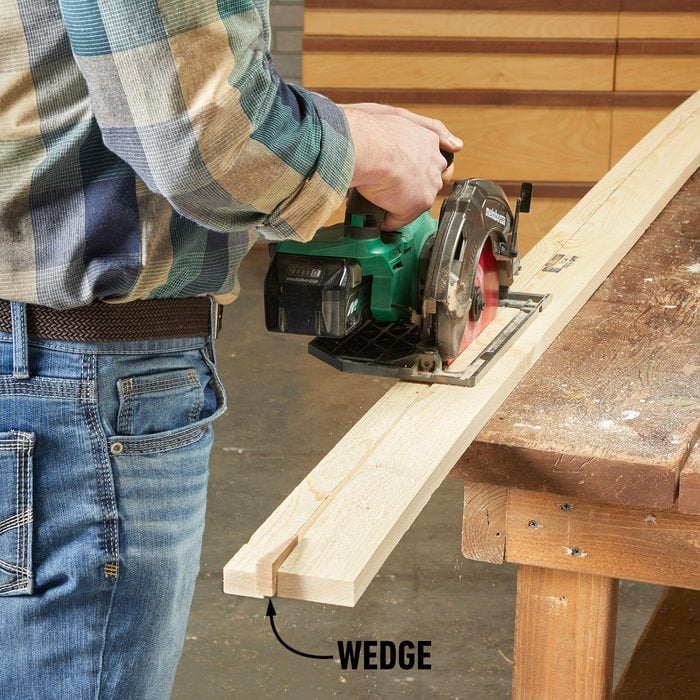
Keep It Consistent
When ripping a bowed piece of lumber with a circular saw, here’s how to keep the strip you’re cutting off a consistent width for the full length of the board:
Line up the saw blade with the cut mark at the desired width. Make a pencil mark on the shoe of the saw directly above the board edge. Now when you push the saw the length of the board, just keep the pencil mark on the shoe lined up with the edge of the board.
Important: Before cutting one-third of the way, tap a wedge into the cut to keep it from closing up and causing the saw to kick back. — Thomas Roberts.
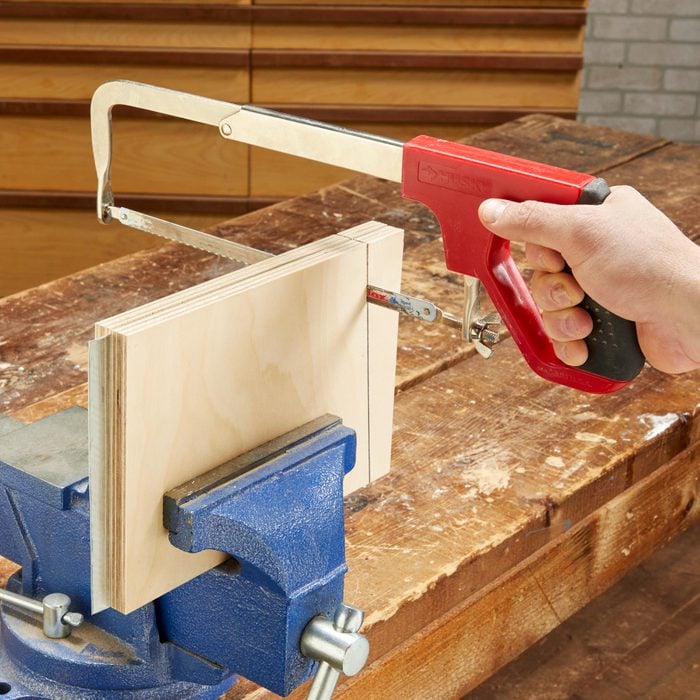
Sheet Metal Cuts With a Hacksaw
Cut sheet metal cleanly with a hacksaw by sandwiching the metal between two thin boards. Mark your pattern on the front board, clamp the sandwich in a vise, then saw on the marks through the entire sandwich at once. — Jack Kiser.
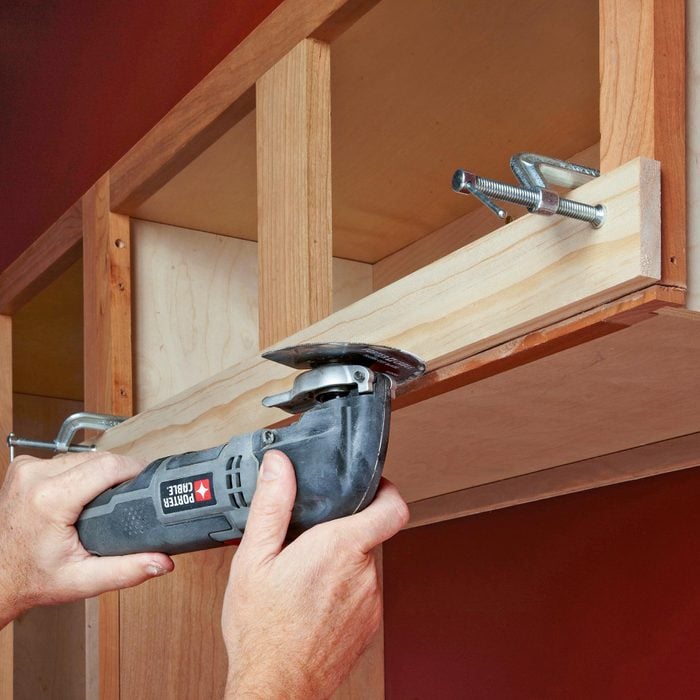
Use a Straightedge for Straight Cuts
Need to shave a little off a cabinet or a piece of trim because someone read the tape measure upside down? Use the oscillating tool to make a clean, precise cut and make the problem go away. Use a straightedge if you need a guide for the oscillating saw blade. Just watch that the blade doesn’t gouge the straightedge and go off-course.
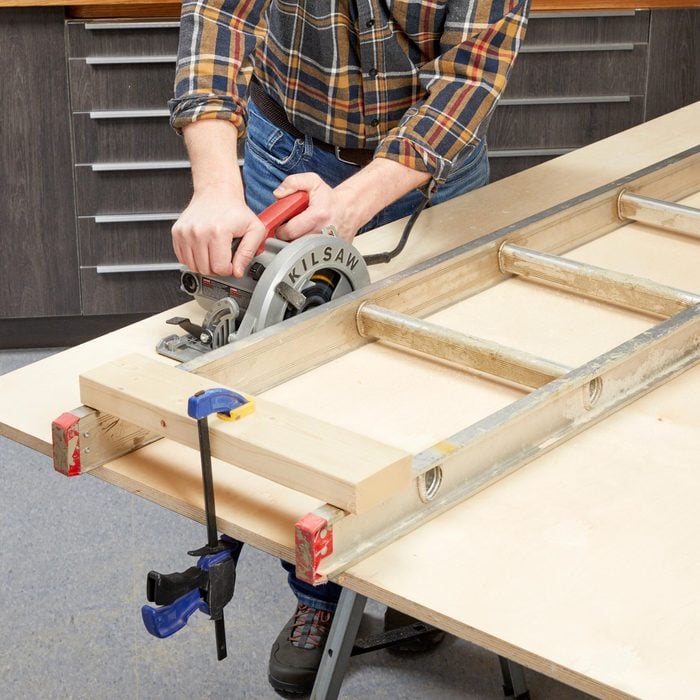
Super-Long Straightedge
A metal extension ladder makes a great straightedge for long cuts with your circular saw. Clamp the ladder at each end with a wood cleat and a small pipe clamp or bar clamp. — Will Tanis.
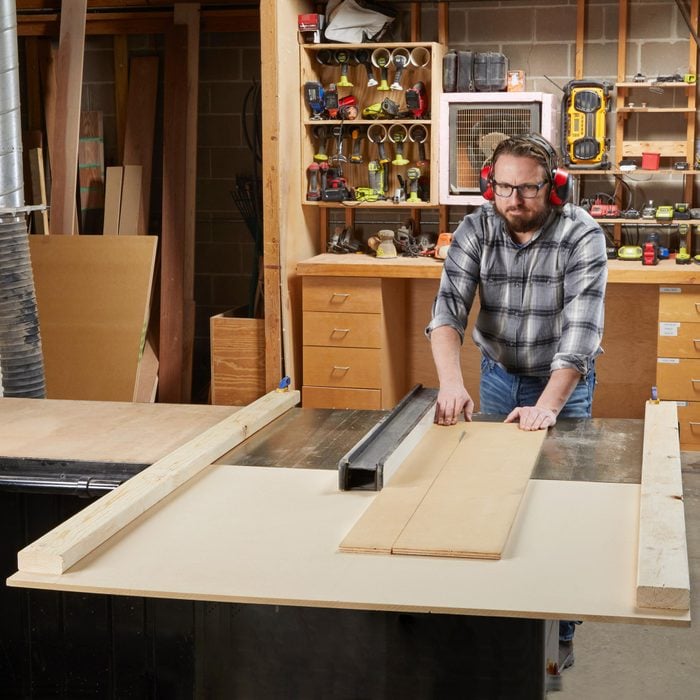
Simple Outfeed Support
Ripping the last few feet of a long board without a helper or support at the other end is virtually impossible. You can solve the problem with an expensive roller support. If you don’t have one, set up a temporary outfeed support with clamps, two 2x4s and plywood.
To make a temporary outfeed table, clamp two 8-ft. 2x4s to the saw table, cantilevering them about feet feet over the outfeed side. Then screw or clamp 1/4-in. plywood to the underside of the 2x4s. Clamped to the saw table, the 2x4s keep the plywood perfectly flush with the table surface. The boards you’re cutting slide onto the support without getting stuck.
This works only for contractor-size and larger table saws with heavy tables. It could cause lighter benchtop saws to tip or bend. If your saw is too light, add 2×4 support legs to the end of the plywood. — Bruce Eclov.
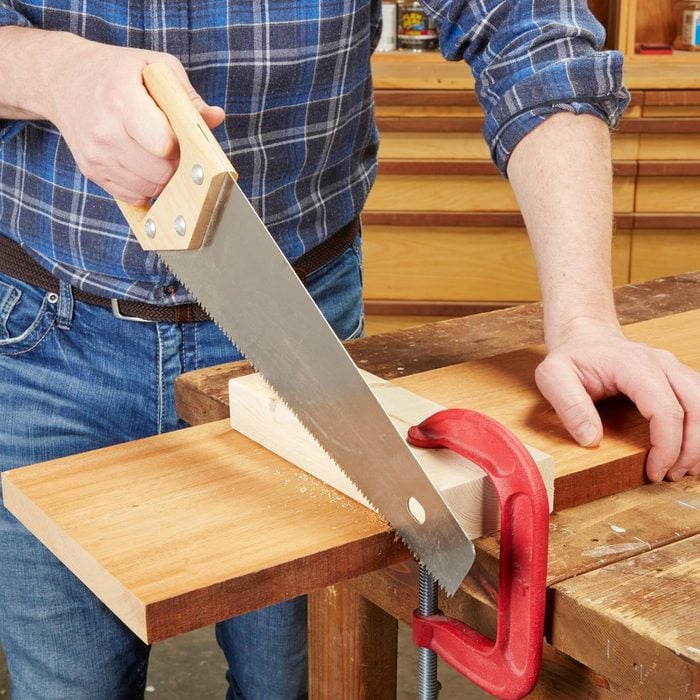
Handsaw Cutting Clamp
When cutting with a handsaw, it’s hard to start accurately. To solve this problem, use a C-clamp to secure a scrap wood block along the cutting line. This keeps the saw on the cutting line until the blade has a good start in the cut.
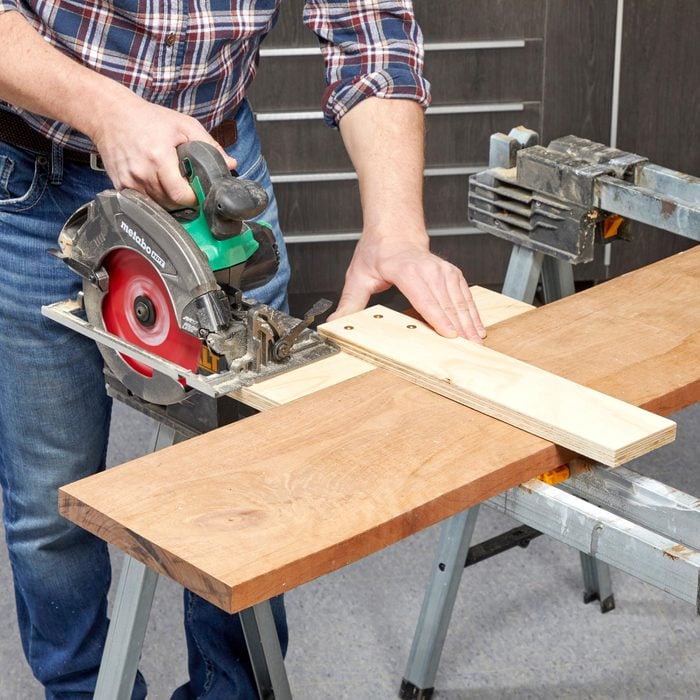
Circular Saw Guide
Make this circular saw cutoff guide from almost any straight pieces of scrap wood.
Attach the two pieces with glue and screws at exact right angles to each other. Make the right-hand arm of the guide a bit longer than the distance from the blade to the left edge of the saw’s shoe. The first time you use the guide, the saw will trim off the excess.
From then on, just line up the right end of the guide with your cut mark. Cut with the shoe against the shoe guide for a straight, square cut.
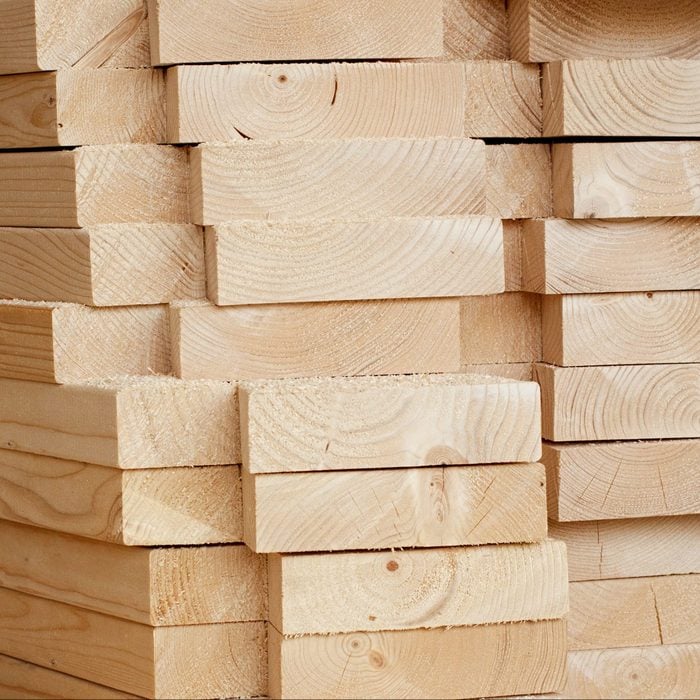
Don’t Trust Factory Edges
We’ve all been there: You’re working with a stack of fresh boards or plywood panels when you realize you need to draw a straight line to mark a cut. If you don’t have a straightedge close at hand, you’ll likely be tempted to use one of the fresh boards. After all, the factory edge is straight, right?
Not so fast! While some factory edges may be straight and true, that’s far from universal. If you need a straightedge, use one you know is accurate. It may take a little more time than simply grabbing another board, but it may save a lot of aggravation in the long run.
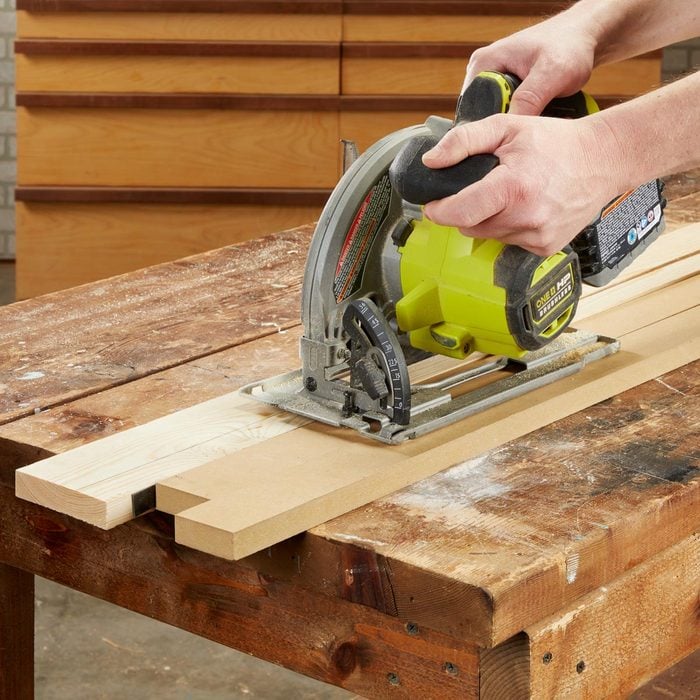
Long Cuts on Narrow Boards
When you need to cut a narrow board lengthwise, it’s almost impossible to keep the base of the circular saw stable. The easiest solution: Temporarily attach a “carrier board” of the same thickness, edge to edge, using pieces of double-sided tape every six inches. It’s a lot safer, too.
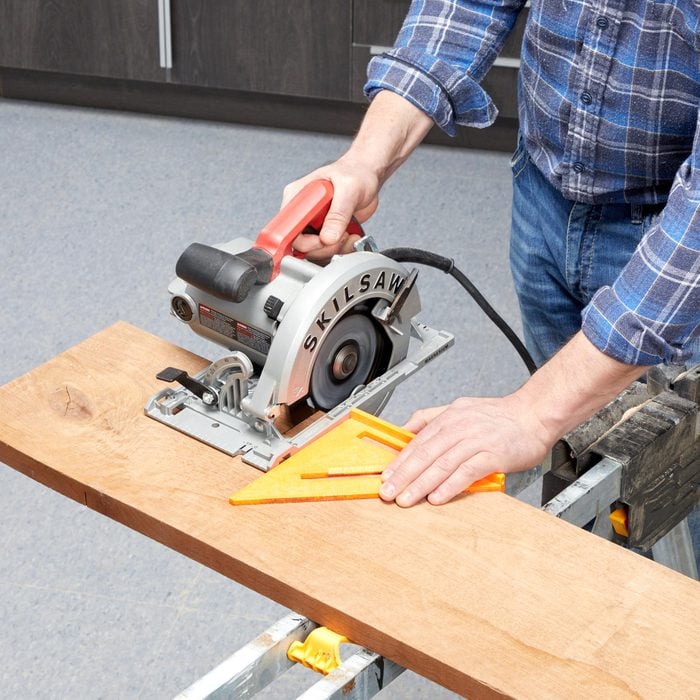
Guiding Saw Cuts
Speed squares are a quick saw guide for cutting 45- and 90-degree angles. The plastic squares are thicker than most metal ones, making them a good fence for the shoe of a circular saw to ride along.
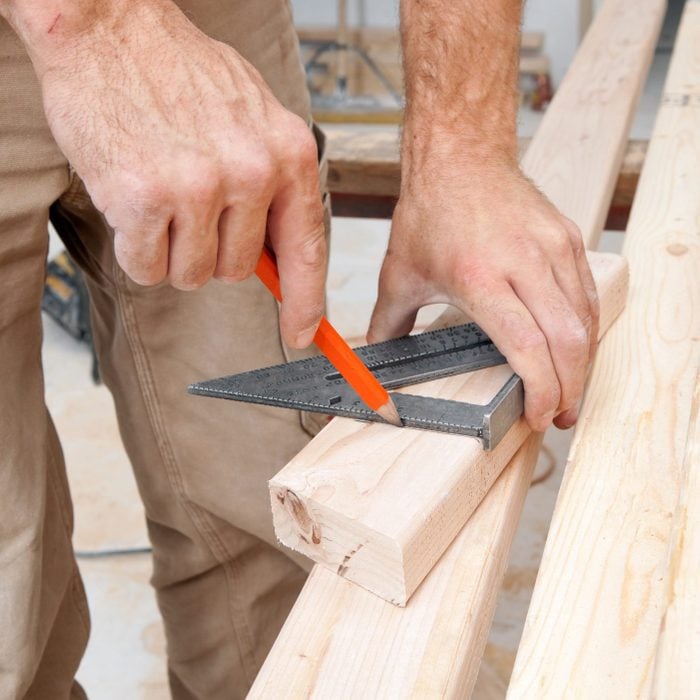
Line Scriber
A Speed Square often serves as a line scriber because it provides precision in a hurry. It can easily mark parallel lines.
